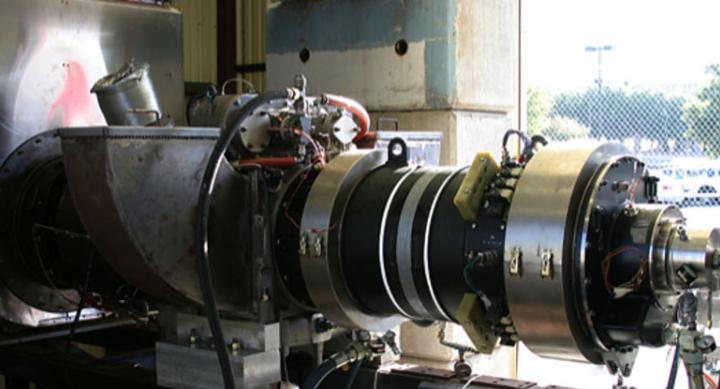
Program Overview
Since 1972, CEM has designed and utilized the rotating mechanical energy stored in rotating machines to produce pulsed, high–power, electrical generators for a variety of experimental, industrial, and military applications. Today, the requirement for more compact pulsed power sources is increasing in response to a broad range of pulsed and intermittent duty electric weapon systems currently under development. Electromagnetic launchers, aircraft catapults, directed energy systems including microwave sources and electric lasers, and electric armors all require high energies delivered intermittently at very high power. Power systems that can provide both compact energy storage and have the ability to generate, condition, and deliver power to these types of loads are of particular interest. Advances in rotating machines that incorporate composite structural materials have allowed significant improvement in the achievable energy storage density. Optimized electromagnetic designs, using both iron-based and air-core magnetic circuits are being studied for pulsed and intermittent duty applications. Combining these electromagnetic designs with the ability to store energy in compact form, and advanced output power conditioning technologies offers a variety of opportunities for rotating machine innovation.
CEM Approach
CEM has been at the forefront of high-speed and performance rotating electrical machine development for a variety of applications for over four decades. CEM has cultivated unique design capabilities over numerous projects, developing solutions that leverage both enterprise analysis tools and proprietary composite design tools. CEM built its reputation through pulsed power applications, but current research activities include advancing composite and bearing technologies, developing multi-purpose hybrid energy storage system solutions, super-conducting machine designs, advancing thermal and structural design solutions to insure operational life, and implementation of advanced power electronics.
Contact

Mr. Scott Pish
s.pish@cem.utexas.edu
512-232-1672
Projects
Super Conducting Motor
The goal of this project is to provide a more efficient and cost effective generator design that enables wind power generation to make more of an impact in the ever-growing global demand for electrical power.

HPG for Bridge Weldments
UT-CEM is subcontracting to KAI to support the design, material procurement and fabrication of a subscale HPG.

ONR CHPS
Integration of high energy, high power mission systems onto future ships is currently being explored by the Navy research and development community.


